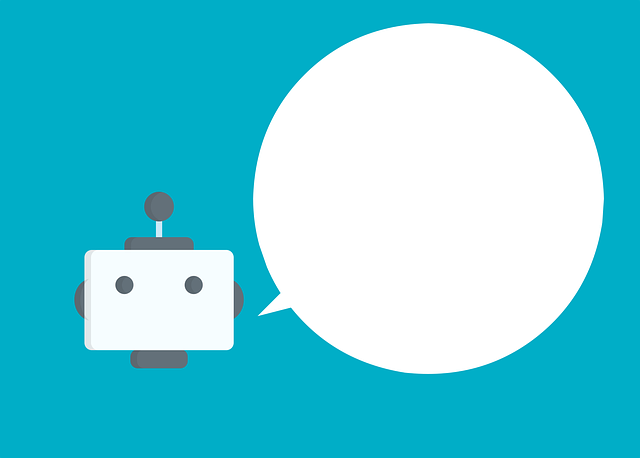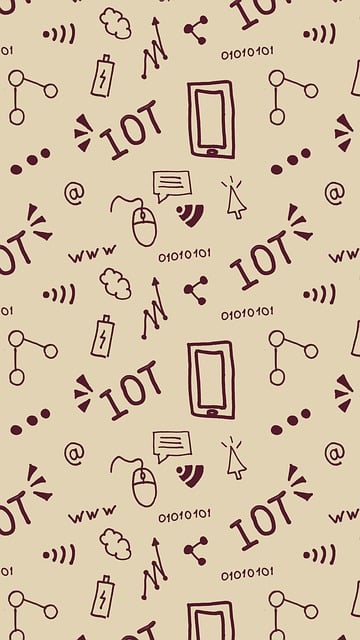Generative AI has revolutionized chatbots by enabling them to engage in sophisticated, human-like conversations through advanced algorithms and models. These AI systems can generate a wide array of content, from text to images, music, and beyond, learning from extensive datasets to provide creative, contextually relevant responses using natural language processing (NLP). Chatbots now offer personalized interactions by adapting to user preferences and history, enhancing the relevance and helpfulness of their responses. As AI models become more sophisticated, chatbots are increasingly capable of handling complex interactions across customer service, education, and entertainment, thanks to the integration of NLP, continuous testing for accuracy and bias, and deployment strategies that support real-time monitoring and improvement. The evolution of chatbots is an ongoing process that involves regular updates with new data to keep up with changing language patterns and user needs, ensuring they remain indispensable tools for users seeking assistance in a variety of contexts. Keywords: generative AI, chatbot development, NLP integration, personalized interactions, continuous improvement, machine learning, bias testing.
Exploring the intricacies of building a generative AI chatbot, this comprehensive guide elucidates the foundational elements and advanced techniques necessary for creating an intuitive conversational partner. We’ll delve into understanding the essence of generative AI within chatbots, designing user-centric dialogues, and leveraging cutting-edge frameworks and technologies to craft your bot’s core. Additionally, we’ll cover the critical steps in training your chatbot with diverse datasets for expansive knowledge and integrating sophisticated NLP models to refine its communicative prowess. By examining testing, deployment, and continuous improvement strategies, this article sets a solid groundwork for developers aiming to deliver seamless chatbot experiences.
- Understanding Generative AI and Its Role in Chatbots
- Designing the Conversational Flow for Optimal User Experience
- Selecting the Right Framework and Technologies for Your Chatbot
- Training Your Chatbot with Diverse Datasets for Broader Knowledge
- Integrating Natural Language Processing (NLP) Models for Effective Communication
- Testing, Deployment, and Continuous Improvement Strategies for Your Generative AI Chatbot
Understanding Generative AI and Its Role in Chatbots

Generative artificial intelligence (AI) represents a significant leap forward in the development of intelligent systems, particularly in the realm of conversational agents. At its core, generative AI encompasses algorithms and models that can produce new content after learning from a dataset. This content can range from text to images, music, and beyond. In the context of chatbots, these capabilities enable the creation of machines capable of engaging users in natural, human-like dialogue. The role of generative AI in chatbots is multifaceted; it allows for the generation of responses that are not only contextually relevant but also exhibit a degree of creativity and variability in communication. This is achieved through machine learning techniques such as natural language processing (NLP), which empower chatbots to understand and predict human language patterns, thus facilitating more seamless interactions.
Moreover, generative AI contributes to the personalization of chatbot experiences by tailoring conversations to individual user preferences and history. This personalization aspect is crucial for delivering relevant and helpful responses, which can improve user satisfaction and engagement. As generative AI models continue to evolve, becoming more sophisticated and trained on diverse datasets, chatbots are expected to become increasingly adept at handling complex interactions and providing assistance in a wide array of scenarios, from customer service to educational support and entertainment. The integration of generative AI into chatbot frameworks is thus a transformative development that holds the potential to reshape how humans interact with machines, making these exchanges more natural and efficient.
Designing the Conversational Flow for Optimal User Experience

To design a generative AI chatbot with an optimal user experience, it’s crucial to meticulously plan the conversational flow. This involves mapping out potential user intents and the corresponding bot responses to create a seamless interaction process. The chatbot should be equipped with natural language processing capabilities to interpret user queries accurately and respond in a manner that feels intuitive and human-like. To achieve this, developers can leverage machine learning models trained on diverse datasets to enhance understanding across various topics and contexts.
In the initial stages of design, it’s essential to consider the user’s journey through the chatbot interface, ensuring clarity at each interaction point. This includes setting up clear entry points for different types of inquiries, maintaining context throughout a conversation, and allowing users to easily navigate to different topics or return to previous discussions. The chatbot should also handle ambiguous queries and incorrect inputs gracefully, offering helpful clarifications or guidance without causing frustration. By focusing on a user-centric approach during the conversational flow design, chatbots can effectively simulate a natural conversation, making the experience as smooth and engaging as possible for end users. Keywords: generative AI chatbot, conversational flow, user experience, natural language processing, machine learning models.
Selecting the Right Framework and Technologies for Your Chatbot

When embarking on the journey to create a generative AI chatbot, selecting the appropriate framework and technologies is paramount for its success. The choice of a framework depends on various factors including the complexity of the tasks you want your chatbot to perform, the scale at which it will operate, and the programming languages with which your team is most proficient. For instance, TensorFlow and PyTorch are widely regarded in the AI community for their versatility and robust ecosystems, making them suitable choices for building sophisticated neural networks that power conversational AI. Additionally, leveraging libraries like Hugging Face’s Transformers can significantly streamline the process of integrating state-of-the-art models into your chatbot.
In terms of technologies, consider cloud services that offer scalable infrastructure to support your chatbot’s operations. Amazon Web Services (AWS), Google Cloud Platform (GCP), and Microsoft Azure all provide platforms with the necessary computing power, storage, and APIs to facilitate natural language processing and understanding. Moreover, these platforms often come with pre-trained models that can be fine-tuned for your specific use case. Ensuring your chatbot is built on a scalable architecture will allow it to handle a growing number of interactions seamlessly and maintain high performance. By carefully selecting the right framework and technologies, you lay a solid foundation for your generative AI chatbot, paving the way for its efficient and effective deployment.
Training Your Chatbot with Diverse Datasets for Broader Knowledge

To construct a generative AI chatbot with a broad knowledge base, it is imperative to train your model on diverse datasets. This process allows the chatbot to understand and generate responses across various subjects and contexts. The training phase involves feeding the AI model with a substantial corpus of text data that encompasses different domains, dialects, and styles. By doing so, the chatbot can learn to communicate effectively in multiple languages and adapt to user queries from diverse linguistic backgrounds. It’s also crucial to incorporate datasets that reflect real-world interactions, ensuring the AI can handle colloquialisms, slang, and idiomatic expressions. This diversity in training not only enhances the chatbot’s ability to engage with users but also reduces the likelihood of generating biased or incorrect responses.
Furthermore, leveraging datasets from various sources such as forums, news articles, scientific papers, and social media can help the chatbot acquire specialized knowledge. This approach enables the AI to perform tasks that require domain-specific expertise, like providing technical support or answering complex inquiries within niche fields. It’s important to curate these datasets carefully to avoid including low-quality or misleading information that could compromise the chatbot’s performance and reliability. By continuously updating the training data with fresh, relevant content, the chatbot can maintain its proficiency and stay abreast of new topics and emerging trends, ensuring a broad and up-to-date knowledge base for users to interact with.
Integrating Natural Language Processing (NLP) Models for Effective Communication

Integrating Natural Language Processing (NLP) models is a pivotal step in crafting a generative AI chatbot that can engage users effectively. The success of such a chatbot hinges on its ability to understand and generate human-like text. To achieve this, one must leverage advanced NLP techniques that enable the chatbot to parse user input accurately and respond appropriately. State-of-the-art NLP models, like GPT (Generative Pre-trained Transformer) or BERT (Bidirectional Encoder Representations from Transformers), can be fine-tuned with domain-specific data to enhance their understanding of context and nuance. These models are trained on vast amounts of text data, enabling them to predict the next word in a sentence or complete a given prompt in a coherent and contextually relevant manner. By incorporating these NLP models into chatbot frameworks, developers can create conversational agents capable of handling complex interactions with users, from answering FAQs to engaging in more sophisticated dialogues. It’s crucial to continuously evaluate and refine the NLP model’s integration to ensure the chatbot maintains a high level of accuracy and relevance in its responses, thus providing a seamless conversational experience.
Furthermore, the integration of NLP models should be complemented by a robust machine learning pipeline that includes data preprocessing, model training, evaluation metrics selection, and iterative improvements based on performance feedback. This comprehensive approach allows for the refinement of the chatbot’s language understanding capabilities and its ability to generate responses that are not only grammatically correct but also contextually appropriate and human-like. The ongoing development process must account for the dynamic nature of human language, ensuring the chatbot can adapt to new slang, colloquialisms, and evolving usage patterns to remain effective over time. By prioritizing the seamless integration of NLP models within the chatbot’s architecture, developers can build a tool that not only serves as an efficient intermediary between humans and machines but also one that can foster engaging and meaningful interactions.
Testing, Deployment, and Continuous Improvement Strategies for Your Generative AI Chatbot

To ensure your generative AI chatbot functions effectively, a robust testing framework is imperative. This should encompass unit tests to validate individual components, integration tests for interfaces between different parts of the system, and end-to-end tests that simulate real user interactions. Test cases should cover a wide range of scenarios, including edge cases, to guarantee the chatbot responds accurately under diverse conditions. Additionally, testing for bias and fairness within the AI’s responses is crucial to maintain ethical standards. Post-deployment, monitoring tools can track the chatbot’s performance, user engagement metrics, and response times in real-time. This data informs ongoing refinements, allowing for rapid iteration and improvements based on user feedback and interaction patterns. Deployment strategies may involve a phased rollout to gather initial insights before scaling up, or a full launch followed by immediate monitoring for any issues that arise. Continuous improvement is a cycle of collecting data, analyzing its implications, making necessary adjustments, and re-evaluating the chatbot’s performance. Employing machine learning techniques, such as reinforcement learning, can further enhance the chatbot’s capabilities over time by enabling it to learn from each interaction. Regular updates and retraining with fresh datasets ensure the chatbot remains current with language trends and user preferences, thus providing consistently relevant and helpful responses. Chatbot development teams should also stay abreast of technological advancements in natural language processing and generative models to implement cutting-edge features that can elevate user experience. Integrating analytics and feedback loops allows for a data-driven approach to improving the chatbot’s functionality, ensuring it remains a valuable and efficient tool for users seeking assistance.
In conclusion, building a generative AI chatbot is a multifaceted endeavor that requires a solid understanding of generative AI’s role in enhancing user engagement. By carefully designing the conversational flow and selecting appropriate frameworks and technologies tailored to your project’s needs, you can create a responsive and intelligent chatbot. Enriching your chatbot with diverse datasets and advanced NLP models ensures it can communicate effectively across various domains. Finally, robust testing, deployment, and continuous improvement strategies are key to refining the chatbot’s performance. With these steps, your generative AI chatbot can provide users with a seamless and informative experience, marking a significant advancement in conversational interfaces.
